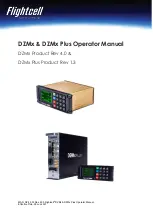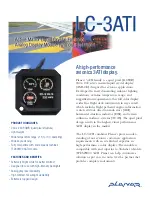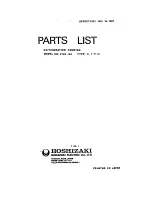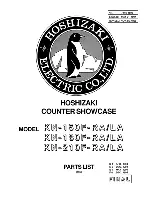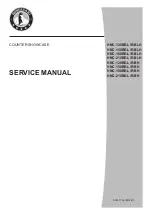
FLEXCOMM
II
C-5000 (Non-Digital)
Installation Manual
150-1355-000 Rev. M
CONFIDENTIAL AND PROPRIETARY TO COBHAM
Page 62
SECTION 4 - ELECTRICAL INSTALLATION
1. General
The following section describes the wiring requirements and options for the installation of the
system. Because the system has so many features and options, it is recommended that the
installer take the time to read pin descriptions and all notes on wiring diagrams before
designing an installation.
------
SYSTEM INTERFACE
------
TRANSCEIVER #1 CONNECTOR
------
TRANSCEIVER #2 CONNECTOR
/OR EMPT
Y
------
TRANSCEIVER #3 CONNECTO
/OR EMPTY
Figure 4-1 Rear View of C-5000
2. Wiring Considerations
To simplify the systems design, follow the steps below:
Step 1: Determine the type and number of radios. The C-5000 can control up to three
transceiver systems. The word system is used because a Flexcomm I installation
can be made of multiple transceivers electrically daisy chained to make one
system. Based on the type of radio, chose the part number of C-5000 that applies
to your application.
Step 2: Determine the type of antenna. For each transceiver, determine the appropriate
antenna. For Flexcomm I Transceivers, see the proper installation manuals for
options. For the RT-5000, the process begins by determining if the user needs
optimum 30-88MHz performance. If so, the recommended antenna system will be
an “active” antenna (i.e. one that is electrically tuned for maximum performance).
If the user rarely uses 30-88 MHz, then passive antenna is suggested. Passive
antennas are less expensive and less complex to install. Remember that
performance in the 30-88 MHz frequency range is very degraded vs. an active
antenna.


































